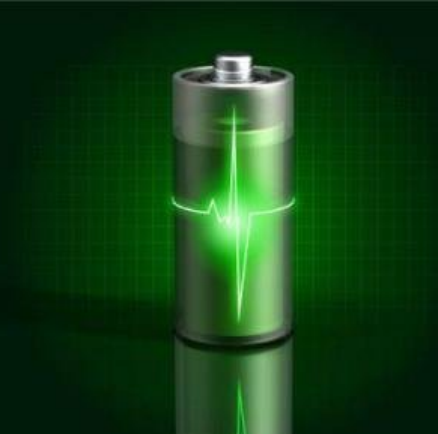1. Introduction
Just 24 hours ago, architects and builders worldwide reacted to the unveiling of a new sustainable housing prototype in Copenhagen that features a corten steel facade paired with zinc clad dormers—highlighting the growing trend of combining durable, low-maintenance metal cladding systems in modern design. This innovation underscores a broader shift toward resilient, eco-conscious exteriors, making it the perfect moment to explore what ‘metal clad’ really means and how to choose the right type for your needs.

In this deep-dive analysis, we’ll unpack the clad metal meaning, compare popular metal clad types—from corten steel siding to aluminum clad steel—and evaluate their real-world performance in applications like metal clad walls, roofs, and even electrical systems. Whether you’re designing a metal clad house or sourcing materials like stainless clad aluminum or pac clad standing seam panels, this guide has you covered.
2. Understanding Metal Clad: Meaning and Core Concepts
2.1. What Does ‘Metal Clad’ Mean?
The term metal clad (or metalclad) refers to a composite material or system where one metal is bonded—mechanically, metallurgically, or through electroplating—to another for enhanced performance. This could mean corrosion resistance, structural strength, thermal efficiency, or aesthetic appeal. Clad metals are widely used in construction, aerospace, and electrical engineering.
For example, aluminum clad stainless steel combines the corrosion resistance of stainless steel with the lightweight and cost-effective nature of aluminum. Similarly, copper-nickel clad or titanium clad materials offer specialized benefits in marine or high-temperature environments.
2.2. Common Applications Across Industries
- Metal clad buildings use steel plate or corrugated steel facade systems for durability and speed of assembly.
- Metal clad electrical wire (like aluminum clad steel wire or cu clad wire) provides mechanical protection and grounding in commercial installations.
- Aluminum clad pipe insulation and metal clad insulation systems improve thermal efficiency in HVAC and industrial piping.
- Exterior elements like metal weatherboard, vertical standing seam metal siding, and pac clad column covers enhance both function and form.

3. Comparing Popular Metal Clad Facade and Siding Options
3.1. Corten Steel: Rust as a Feature
Corten steel siding has surged in popularity due to its self-protecting rust patina. A corten steel facade requires no painting and ages gracefully, making it ideal for modern metal clad houses. However, corten siding cost can be high—typically 20–30% more than standard steel—and runoff may stain adjacent surfaces during the weathering phase.
Best for: Sculptural architecture, industrial lofts, and projects where maintenance-free longevity is key.
3.2. Zinc and Copper: Premium Aesthetics with Longevity
Zinc metal siding and zinc clad roof systems offer a sleek, matte finish that develops a soft patina over decades. Zinc facade panels are lightweight, 100% recyclable, and resistant to UV degradation. Similarly, copper siding delivers unmatched elegance and can last over 100 years.
Downsides include higher upfront costs and sensitivity to acidic rain in certain climates. A zinc clad dormer, for instance, adds architectural interest but demands skilled installation.

3.3. Aluminum and Steel: Versatility Meets Value
Aluminum clad steel (or aluminium clad steel) is a workhorse in commercial cladding. It’s often used in colorbond standing seam or pac clad hwp systems. Aluminum’s natural oxide layer prevents rust, while steel provides structural backbone.
Options like exterior corrugated metal siding or steel clad inc panels offer rugged appeal at lower costs. For residential use, standing seam facade systems—especially pac clad standing seam roof variants—deliver clean lines and excellent water shedding.
4. Technical Considerations: From Plates to Wires
4.1. Clad Metal Plates and Sheets
Beyond facades, clad metal meaning extends to engineered plates. Stainless steel plate grades like 316L or alloy plates such as 6061 T6 aluminum plate are often used as base materials. Cladding processes like electroplating (e.g., chromium electroplating for chrome metal finishes) or weld overlays (e.g., Inconel 625 overlay for extreme environments) enhance surface properties.
Common products include diamond plate steel for slip resistance, aluminum tread plate for stairs, and perforated plate for ventilation—all available as mild steel plate, stainless plate, or alloy sheet 3mm variants.
4.2. Electrical and Insulation Uses
Metal clad wire—such as metal clad electrical wire with aluminum or steel armor—is rated for wet locations and surface mounting in commercial buildings, including in Pennsylvania. It’s distinct from non-metallic cables due to its grounded metal sheath.
Meanwhile, aluminum clad pipe insulation uses reflective aluminum foil over foam or fiberglass to reduce heat loss, commonly seen in industrial settings.
5. Making the Right Choice
When selecting a metal clad type, consider climate, budget, lifespan, and design intent. A steel clad building in a coastal area might benefit from stainless clad aluminum to resist salt corrosion. For a minimalist home, vertical standing seam metal siding in a matte black finish offers drama without upkeep.
Don’t overlook compatibility: mixing metals (e.g., copper near aluminum) can cause galvanic corrosion. Always consult material compatibility charts and local building codes—especially when using metal clad cable in exterior walls or wet zones.
6. Conclusion
Metal clad isn’t just a buzzword—it’s a versatile, high-performance solution spanning architecture, engineering, and infrastructure. From the raw beauty of a corten steel plate to the precision of pac clad coping on a rooftop, the right clad metal system balances form, function, and future-proofing. Whether you’re sourcing steel plate for sale or designing a zinc facade, understanding these options ensures your project stands the test of time—and weather.
Our Website founded on October 17, 2012, is a high-tech enterprise committed to the research and development, production, processing, sales and technical services of ceramic relative materials such as Choose. Our products includes but not limited to Boron Carbide Ceramic Products, Boron Nitride Ceramic Products, Silicon Carbide Ceramic Products, Silicon Nitride Ceramic Products, Zirconium Dioxide Ceramic Products, etc. If you are interested, please feel free to contact us.
